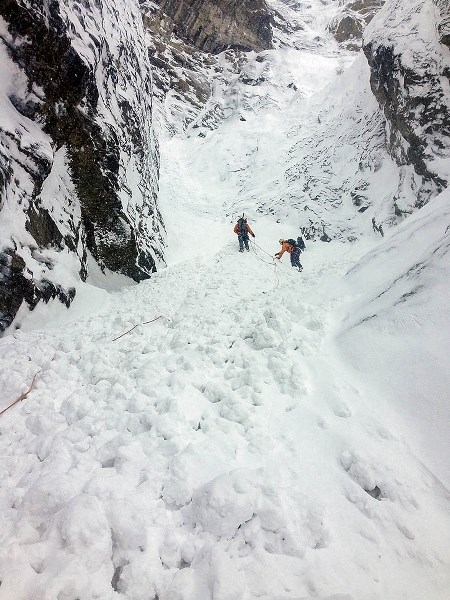ROCKY MOUNTAINS – Avalanche Canada and Parks Canada public safety specialists are warning backcountry enthusiasts that recent snowfalls in the Rocky Mountains have resulted in elevated risk and conservative decisions are encouraged.
Parks Canada visitor safety technician with Banff, Yoko and Kootenay National Parks Tim Haggarty said up to 50 centimetres of storm snow has fallen in the past four days on top of a weak base layer from mid-October, creating "touchy" conditions for the foreseeable future.
"Right now we are seeing natural avalanches occurring in the alpine and treeline elevations and running a fair distance, due to the weakened nature of the snow that is underneath," Haggarty said. "We are likely to see a prolonged period where human-triggered avalanches are likely."
During breaks in the storms this week, which have covered the mountains in the interior of B.C. and western Alberta in snow, expected on Friday afternoon (Dec. 14) and Sunday (Dec. 16), Haggarty warned those taking advantage to head outdoors and enjoy winter recreation in the backcountry to make conservative decisions, take the time to properly plan out trips and understand the risk levels in the places they are headed.
"We are expecting the hazard to stay elevated here for quite some time and the concern would be that people try to make use of the short weather window we have and stepping onto unstable snow where chances of triggering an avalanche would already be high," he said.
Parks Canada and local ski hills were also working throughout Friday to manage the hazard, Haggarty added, and around 10 a.m. a human-triggered avalanche was seen in the west bowl area of Lake Louise.
"Someone may have been involved," he said, noting tracks were seen leading into and out of the recent slide. "Things have changed, it is time to pull in the reigns and make conservative route finding decisions."
Avalanche Canada issued a special public avalanche warning for most mountainous regions of B.C. on Thursday afternoon (Dec. 13) for all backcountry uses until the end of day Sunday (Dec. 16).
With a prolonged drought through November and early December followed by snowfall this week, Avalanche Canada said the new snow is not bonding well to the old-surface formed over the past month-and-a-half.
“Our main concern is that we are expecting the weather to clear on Saturday,” said senior avalanche forecaster James Floyer in a press release. "After all this rain in the valleys, backcountry users are going to want to hit the alpine, but that’s where the danger is greatest.
"There’s a very weak layer now buried anywhere between 60 and 150-cm. Any avalanche triggered on that layer will definitely be life-threatening.”
Officials cautioned anyone accessing higher elevation terrain to be aware of the hazard, including skiers and boarders leaving ski resort boundaries, or snowmobilers riding at, or above the treeline.
All backcountry users should have essential rescue gear – transceiver, prove and shovel – and know how to use it.
Go to http://www.avalanche.ca or http://www.avalanche.pc.gc.ca to check current avalanche conditions.




